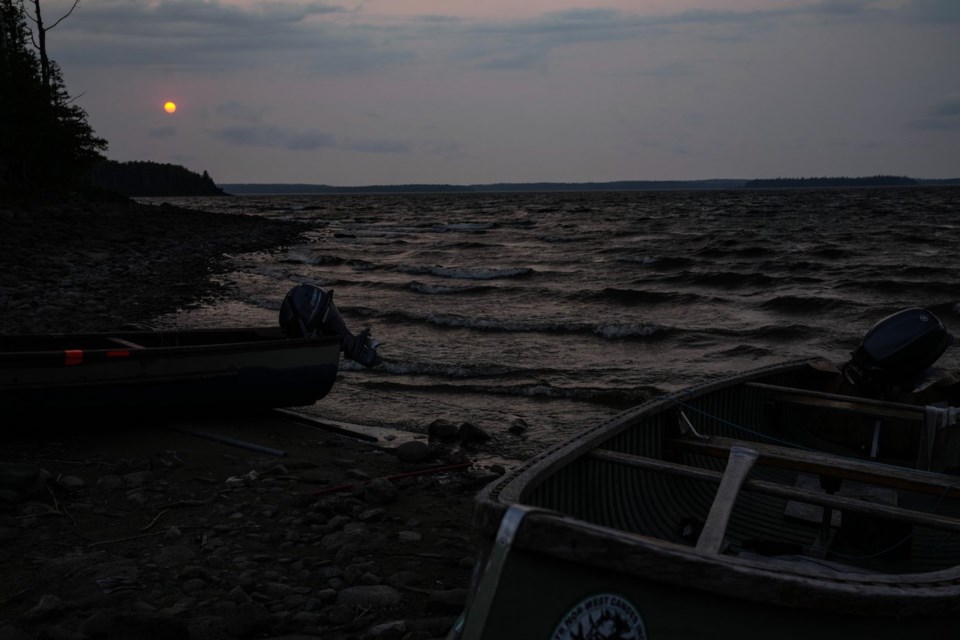TORONTO — Mining claims in the Ring of Fire region are up 66 per cent over the last three years and now total an area 14 times the size of Toronto, an environmental group said Wednesday after compiling the data.
There are now more than 43,000 claims in the region that is some 450 kilometres north of Thunder Bay, Ont., said Anna Baggio, the conservation director of Wildlands League.
"The claims are exploding, so that's a problem," said Baggio, who extracted the data from the Ontario Geological Survey site.
"The problem is that much like the rest of Canada, this is all happening under a free entry system where anyone can register a claim as long as they have a prospector's licence and do the Mining Act course."
Ontario has recently tabled legislation, known as Bill 5, that would create so-called special economic zones where any project can be exempt from laws and regulations.
Premier Doug Ford has said the Ring of Fire region would be the first such zone and the resources buried there would be crucial to dealing with U.S. President Donald Trump's tariffs that triggered a trade war with Canada.
The omnibus bill also proposes to gut protections for endangered plants and animals so that development, particularly mining projects, can be done significantly faster.
The bill has sparked anger and criticism from First Nations, environmental groups and civil liberty organizations while garnering support from the mining industry.
Energy and Mines Minister Stephen Lecce said the province is working to support two main companies that hold the vast majority of claims in the area by providing infrastructure and the regulatory environment to build mines faster.
"It is a massive bounty of resources of rare earths that the world needs," Lecce said.
Ring of Fire Metals, owned by Australian mining giant Wyloo, and Juno Corp, a Canadian company formed in 2019, own the vast majority of claims in the area that is said to be replete with critical minerals.
The mining claims are not just stakes filed online, Baggio said. Wildlands League has documented land clearing and other activity after flying over the Ring of Fire several times in recent years.
"These activities are quite damaging," she said. "They're clearing land, they're dragging machinery through the bush, they are cutting these trails, they laying down the wires to try and figure out what's going on beneath the ground, it's actually quite a destructive footprint today and we're not even at mine development."
The Ring of Fire sits in the Hudson Bay Lowlands and is home to nine First Nations.
Two First Nations are currently leading an environmental assessment on several roads that would ultimately connect the proposed Eagle's Nest mine and those First Nations to the provincial highway system.
The province has inked deals with Webequie First Nation and Marten Falls First Nation that commit Ontario to help build infrastructure projects in and around the communities. The province has also signed a shared-prosperity agreement with Aroland First Nation to rebuild two roads that would connect to the proposed roads to the Ring of Fire.
But several other First Nations in the area – and beyond – take issue with developing the land without their consent and would like the province to help solve long-standing water, housing and mental-health crises that plague many remote First Nations before it thinks about mining the land.
The province is looking to help several remote fly-in First Nations that do not have electricity – they operate on diesel – get on the grid as part of building the "corridor to prosperity," said Indigenous Affairs Minister Greg Rickford.
"It's important to point out that we're talking about half a dozen First Nations communities that are still on diesel power for their electricity sources," he said. "You don't want that, I don't want that, and they don't want that."
Rickford pointed to the government's announcement Wednesday that will triple the province's amount of loan guarantees through a provincial Indigenous financing program, to the tune of $3 billion, as proof of Ontario's commitment to economic reconciliation with First Nations.
Mining, energy and pipeline projects would all be eligible for the fund, he said.
"Other resource projects across the province are characterized by Indigenous ownership, not impact benefit agreements," he said. "These are actual partnership agreements."
He said he wants to see more of that going forward, especially in the Ring of Fire.
"It represents an extraordinary opportunity to have First Nations-led resource activities in forestry and in mining," he said.
But he also doesn't envision thousands of mines opening up in the region.
"The market's saying, 'Well, we'd like to see road access so that one or two of these mines could actually start extraction sooner rather than later,'" he said.
The province will also pony up $10 million over three years to create new scholarships for First Nation post-secondary students who are pursing careers in resource development.
Sol Mamakwa, the New Democrat provincial representative of Kiiwetinoong, where the Ring of Fire is located, said the government has already failed on its duty to consult.
"These special economic zones are pretty much cheat codes for the government to take control of the land, or what they call 'for strategic purposes,'" Mamakwa said.
"The government is using the current tariff situation to promote development on our treaty lands with no consultation and without First Nations sharing in any of the potential benefits."
This report by The Canadian Press was first published May 21, 2025.
Liam Casey, The Canadian Press



